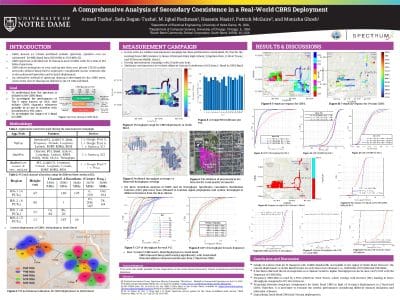Authors
Armed Tusha, Seda Dogan-Tusha, M. Iqbal Rochman, Hossein Nasiri, Patrick McGuire, and Monisha Ghosh
Abstract
The Federal Communications Commission (FCC) in the U.S. has made the Citizens Broadband Radio Service (CBRS) band (3.55 – 3.7 GHz) available for commercial wireless usage under a shared approach using a three-tier hierarchical architecture, where the federal incumbent is the highest priority Tier 1 user, Priority Access License (PAL) holders, who have paid for licenses, are Tier 2 users and Tier 3 users operate under General Authorized Access (GAA), without license fees or protection from higher priority users. The Spectrum Access System (SAS) ensures that higher priority users are protected from interference from lower priority users. However, the lowest priority GAA users are not given any protection from each other by the SAS and are expected to not cause any harmful interference to Tier 1 and Tier 2 users. As the deployments of GAA devices grow, the potential for secondary interference between GAA users increases, especially since the SAS architecture does not allow dynamic channel switching when faced with interference. However, there is limited academic research evaluating the real-world system performance of GAA deployments and secondary coexistence. In this paper, we present a first-of-its-kind extensive measurement campaign of a commercial CBRS network deployed in the city of South Bend, IN, that quantifies both co-channel interference (CCI) and adjacent channel interference (ACI) caused by competing GAA devices and C-band 5G, respectively. We (i) identify a particular CCI scenario and improve performance by changing the frequency allocation based on our study of other allocations in the vicinity and (ii) quantify ACI from 5G in C-band (3.7 GHz) on CBRS throughput. We conclude that (i) CCI and ACI for GAA users is not handled well by the SAS, (ii) proper frequency allocation for GAA requires additional analysis of interference from other GAA users followed by dynamical channel selection, and (iii) utilization of immediate adjacent channels by high power 5G deployments limits the performance of CBRS.

